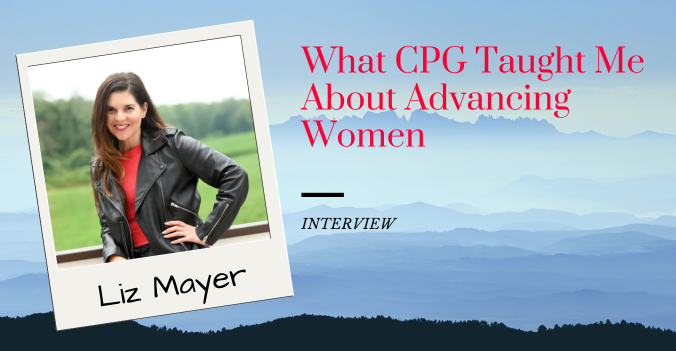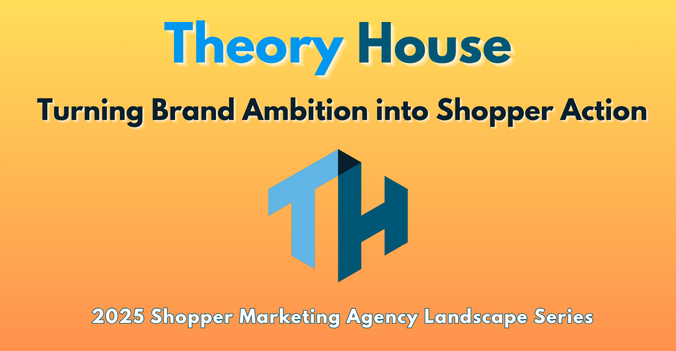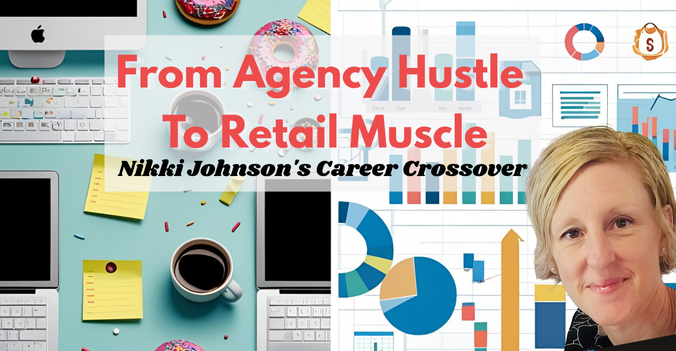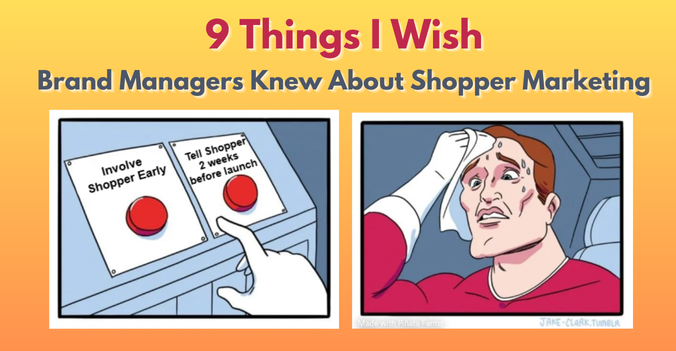Careers in Shopper Marketing is a topic I am passionate about. I love hearing stories about where shopper marketers come from and what careers they pursue if they leave their roles. In the past, my former colleague Carolyne Klug shared about her journey from the agency to the CPG client side. Today’s post is about a similar transition, but from an agency to retail shopper marketing side.
Nikki Johnson knows shopper marketing from every angle—and she's got the battle scars and wins to prove it. After nearly two decades on the agency side, where she led shopper programs for powerhouse CPG organizations like Unilever, Georgia Pacific, Nestlé, and Mars, Nikki made the leap to the retailer side at Target. During her tenure there, she drove in-store marketing across key categories like Food & Beverage, Home, Electronics, Essentials, and Apparel, helping shape how millions of guests experienced brands in real life.
In this interview, Nikki reflects on what it’s really like to cross over from agency to retail, how the mindset shifts, what she wishes she knew earlier—and why, despite the spreadsheets, it’s still a creatively fulfilling ride. If you’ve ever considered switching sides, her story might just give you the nudge (or caution flag) you need.
The Big Leap
Let’s set the stage.
Nikki’s crossover from agency to retailer was part serendipity, part hometown pride. Raised in a suburb outside of Minneapolis, she always felt a pull toward Target. She had spent years executing programs for clients who partnered with the retailer, and that familiarity sparked a curiosity about what it would be like to be on the inside making the calls. When her agency lost a major client, the timing was right. She reached out to a former colleague and quickly landed a contractor gig at Target covering a maternity leave. That temp job turned into a nearly four-year tenure across multiple business units.
Any doubts early on? Surprisingly, no cold sweats. But plenty of learning. “It was like jumping on a moving train,” Nikki said. “I had 2 weeks of overlap with the person going on leave, and then I was leading the business. It’s part leading execution for current programs and part strategy development for future programs. The work was smart, innovative and exciting!”
Then vs. Now
Same industry, radically different vantage points.
One of Nikki’s earliest realizations? Retail is a beast when it comes to cross-functional complexity. She went from tightly-knit agency teams to collaborating with a sprawling matrix of stakeholders—merchants, space planners, store ops, visual merchandisers, creative teams, and even supply chain and print vendors. Every team had its own business priorities and leadership expectations, and success required not just alignment, but orchestration.
What surprised her most? Just how many teams it takes to make retail magic happen. “Everyone has a spoke in the wheel,” she said. “It’s not just launching an idea—it’s knowing who does what, when, and why, and having the flexibility to understand how to get work done.”
What did she miss about agency life? Camaraderie. “Some of my closest friends came from my early agency days,” she shared. “There’s just something about being in the trenches together, in-person, five days a week. At Target, and mostly due to Covid, I was remote almost the entire time.”
What didn’t she miss? Nikki was too gracious to air any dirty laundry. (But we all know about the grind of chasing budgets).
Mindset & Metrics
Going from “big ideas” to “bottom lines.”
So, what makes a great idea on the retailer side?
According to Nikki, great ideas come from the same strategic and creative spark—but the fuel is different. At Target, you’re sitting on a mountain of data, trends, guest insights, and dedicated teams who specialize in each of these spaces. “There’s just a deeper well of resources,” she explained. “The ideas don’t come from one brain; they’re synthesized from ecosystems of research and transformed into inspirational stories that can then be told across all channels.”
As for KPIs, the agency focus on brand goals shifts to trends, leadership goals and merchant-driven outcomes at Target. “You’re asking: what did we learn from previous campaigns that may cause a shift in our current work? Are we aligning with what the merchant is trying to accomplish?” she said. And when it comes to seasonal campaigns—think Halloween or summer fun—success isn’t just measured in hard numbers. At Target, it’s about bringing joy to guests, driving frequency, and becoming the go-to destination to win the season.
Creative freedom? Still there, just a different flavor. At an agency, you serve your client. At a retailer, you are part of the decision-making nucleus. “You get to say, this is the idea, and here’s the strategy and rationale for why it will work,” Nikki said. “You’re not just presenting options—you’re helping to shape the outcome.”
Working Cross-Functionally
Now you’re inside the machine.
Retail work means getting intimate with departments you barely touched on the agency side. Nikki found herself learning the ins and outs of many of the finite details behind what it takes to launch an in-store marketing campaign at Target stores nationwide. Countless store formats, fixturing versions that vary by category, supply chain logistics, etc. “It’s critical to understand all of these details so the campaign is successful. You don’t just hit ‘go’ on a print job and forget about it,” she laughed. “You’re part of every link in the chain until it hits 1,900 stores.”
Finance was another area where her agency skills came in handy. “I wasn’t managing the budget as a contractor, but I was still in the meetings, making the case for where we may need additional funding, or where we may need to adjust,” she said. Importantly, Target’s finance folks understood the work, which made cross-functional communication and partnership very smooth.
Advice for the Curious
For those standing on the edge, peeking over.
Nikki’s advice to agency folks curious about retail? Bring your strategic brain, but also bring humility and stamina. “You need to understand your shopper and your category very deeply. Be flexible, collaborative, and willing to push for your ideas—but be ready to navigate complex org charts.”
What agency skills helped her thrive? Building strong client relationships, communicating clearly, thinking both creatively and logistically. What needed unlearning? Probably the thought that once the idea’s approved, your job is done. In retail, your job is just beginning when campaign creative is approved 🙂.
Bonus Section: The Lightning Round
- Spreadsheets or storyboards? Both. “I love a beautiful creative concept, but I’m also not afraid of a solid budget tracker.”
- Most overused buzzword? "Omnichannel" (we hear you, Nikki).
- Agency brainstorms: invigorating or overrated? “Invigorating. So much hard work and prep goes into making them productive. The ideas generated can often lead to pretty amazing work!.”
- One word to describe retail life? “Satisfying. Or maybe… inspiring”.
Nikki’s story is a reminder that shopper marketing isn’t a one-lane highway—it’s a career freeway with on-ramps, off-ramps, and unexpected detours that can lead to powerful new perspectives. Whether you're dreaming of switching sides or just curious what's on the other side of the org chart, her journey proves that great talent adapts, evolves, and thrives.
More importantly? It shows that no matter where you sit—agency, client, or retail—you can shape how brands come to life.
Got your own crossover story (or a plot twist in the making)? I’d love to hear it. Share in the comments below or reach out to me on LinkedIn.
Other Posts You May Like:
Agency Vs. CPG Client: Deciding The Shopper Marketing Career Path
HOW TO CALCULATE SHOPPER MARKETING ROI
8 features of a great Shopper Marketing Plan


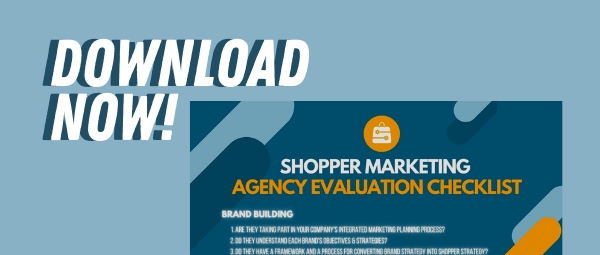

.png)
